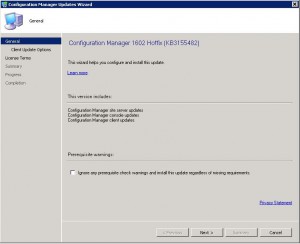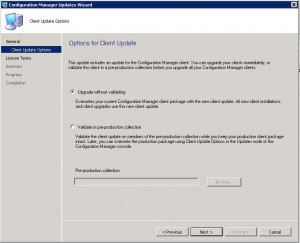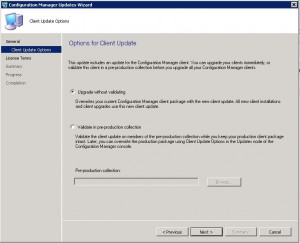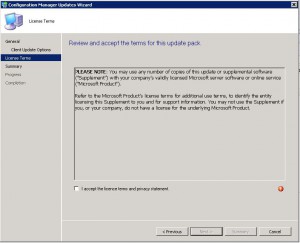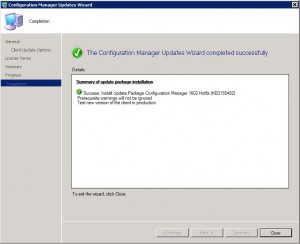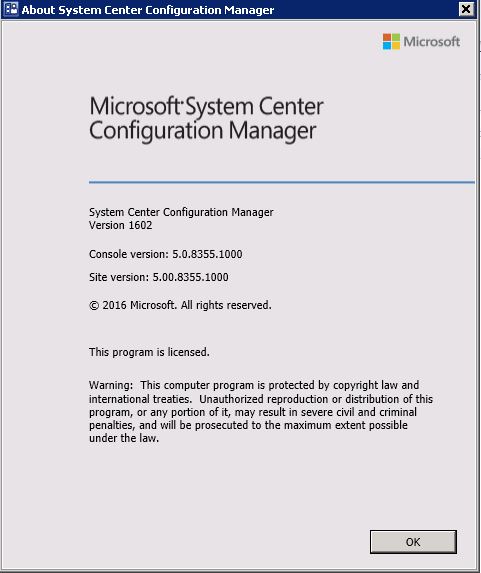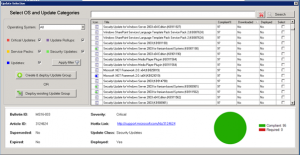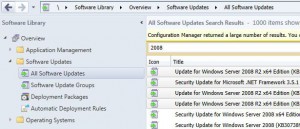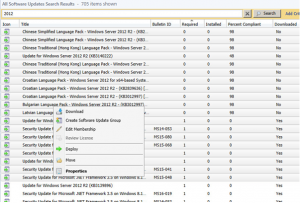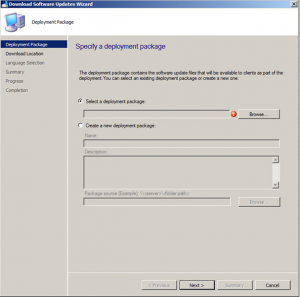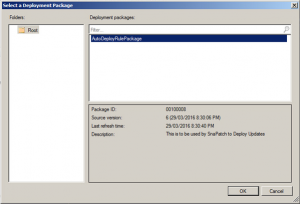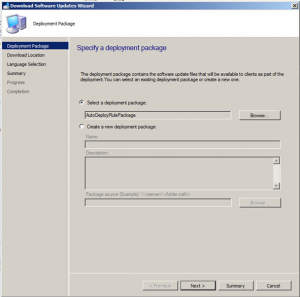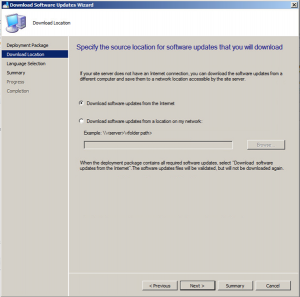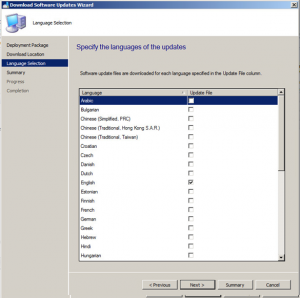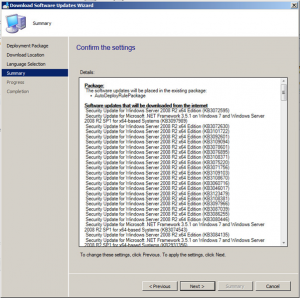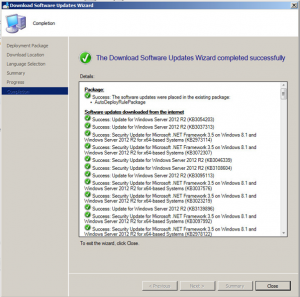
by Mark | Jun 19, 2016 | SCCM
A Comprehensive Guide to SCCM Build Numbers
As an IT professional, it’s essential to be aware of the various build numbers of Microsoft’s System Center Configuration Manager (SCCM). This guide will provide an overview of SCCM build numbers, including their release dates and descriptions. By the end of this guide, you’ll have a better understanding of SCCM build numbers and be able to choose the right version for your organization.
SCCM Build Numbers Overview
SCCM is an enterprise management solution from Microsoft that allows IT teams to manage both traditional and modern devices. It provides a comprehensive set of tools to manage Windows, macOS, Linux, Unix, and mobile devices running iOS, Android, and Windows Phone. SCCM helps manage and deploy software, as well as security updates and patches.
SCCM comes in different versions, and each version has its build numbers, release dates, and descriptions. The following is an overview of SCCM build numbers:
System Centre Configuration Manager (SCCM) by Microsoft versions
System Center Configuration Manager 2016
| Build Number |
Release Date |
Description |
| 5.0.8299.1000 |
2015, September 22 |
SCCM 2016 Technical Preview 3 (Update 1509) |
| 5.0.8315.1000 |
2015, October 14 |
SCCM 2016 Technical Preview 3 (Update 1510) |
| 5.0.8325.1000 |
2015, November 12 |
SCCM 2016 Technical Preview 4 (Update 1511) |
| 5.0.8336.1000 |
2015, December 18 |
SCCM 2016 Technical Preview 4 (Update 1512) |
| 5.0.8347.1000 |
2016, January 27 |
SCCM 2016 Technical Preview 4 (Update 1601) |
System Center Configuration Manager 2012 R2
| Build Number |
Release Date |
Description |
| 5.00.7958.1000 |
2013, October 18 |
SCCM 2012 R2 RTM |
| 5.00.7958.1101 |
2013, November 02 |
SCCM 2012 Post R2 Hotfix |
| 5.00.7958.1203 |
2014, March 28 |
SCCM 2012 R2 CU1 |
| 5.00.7958.1303 |
2014, June 27 |
SCCM 2012 R2 CU2 |
| 5.00.7958.1401 |
2014, September 23 |
SCCM 2012 R2 CU3 |
| 5.00.7958.1501 |
2015, February 2 |
SCCM 2012 R2 CU4 |
| 5.00.7958.1604 |
2015, May 6 |
SCCM 2012 R2 CU5 |
| 5.00.8239.1000 |
2015, May 14 |
SCCM 2012 R2 SP1 |
| 5.00.8239.1203 |
2015, August 4 |
SCCM 2012 R2 SP1 CU1 |
| 5.00.8239.1301 |
2015, November 10 |
SCCM 2012 R2 SP1 CU2 |
System Center Configuration Manager 2012 SP1 & SP2
| Build Number |
Release Date |
Description |
| 5.00.7804.1000 |
– |
SCCM 2012 SP1 |
| 5.00.7804.1202 |
|
SCCM 2012 SP1 CU1 |
| 5.00.7804.1300 |
|
SCCM 2012 SP1 CU2 |
| 5.00.7804.1400 |
|
SCCM 2012 SP1 CU3 |
| 5.00.7804.1500 |
|
SCCM 2012 SP1 CU4 |
| 5.00.7804.1600 |
2014, July 23 |
SCCM 2012 SP1 CU5 |
| 5.00.8239.1000 |
2015, May 14 |
SCCM 2012 SP2 |
| 5.00.8239.1203 |
2015, August 4 |
SCCM 2012 SP2 CU1 |
| 5.00.8239.1301 |
2015, November 10 |
SCCM 2012 SP2 CU2 |
System Center Configuration Manager 2012
| Build Number |
Release Date |
Description |
| 5.00.7711.0000 |
2012, March 31 |
SCCM 2012 RTM |
| 5.00.7711.0200 |
2012, August 22 |
SCCM 2012 CU1 |
| 5.00.7711.0301 |
2012, November 27 |
SCCM 2012 CU2 |
System Center Configuration Manager 2007
| Build Number |
Release Date |
Description |
| 4.00.5135.0000 |
|
SCCM 2007 Beta 1 |
| 4.00.5125.0000 |
|
SCCM 2007 Beta 1 Escrow |
| 4.00.5221.0000 |
|
SCCM 2007 Beta 1 Refresh Escrow |
| 4.00.5224.0000 |
|
SCCM 2007 Beta 1 Refresh |
| 4.00.5224.0000 |
|
SCCM 2007 Beta 1 Refresh |
| 4.00.5571.0000 |
|
SCCM 2007 Beta 2 Escrow |
| 4.00.5574.0000 |
|
SCCM 2007 Beta 2 Escrow Update |
| 4.00.5578.0000 |
|
SCCM 2007 Beta 2 with a hotfix |
| 4.00.5578.0002 |
|
SCCM 2007 RC0 Preview |
| 4.00.5790.0000 |
|
SCCM 2007 RC0 Preview |
| 4.00.5815.0000 |
|
SCCM 2007 RC0 |
| 4.00.5924.0000 |
|
SCCM 2007 escrow |
| 4.00.5931.0001 |
|
SCCM 2007 RTM |
| 4.00.6086.1000 |
|
SCCM 2007 SP1 (prerelease) |
| 4.00.6221.1000 |
|
SCCM 2007 SP1 |
| 4.00.6221.1193 |
|
FIX for SCCM 2007 SP1 and SP2 |
| 4.00.6425.2000 |
|
SCCM 2007 SP2 beta |
| 4.00.6468.2001 |
|
SCCM 2007 SP2 RC |
| 4.00.6487.2000 |
|
SCCM 2007 SP2 |
| 4.00.6487.2111 |
|
FIX for SCCM 2007 SP1 and SP2 |
| 4.00.6487.2157 |
|
SCCM 2007 SP2 R3 |
| 4.00.6487.2207 |
2012, December 03 |
FIX for SCCM 2007 SP2 |
| 4.00.6487.2700 |
|
SCCM SP2 R2 with ICP2 |
| 4.00.6487.2857 |
|
SCCM SP2 R3 with ICP2 |
SMS 2003
| Build Number |
Release Date |
Description |
| 2.50.2726.0020 |
– |
SMS 2003 RTM |
| 2.50.3174.1018 |
2004, September 10 |
SMS 2003 SP1 |
| 2.50.4160.2000 |
2006, February 13 |
SMS 2003 SP2 |
| 2.50.4253.3000 |
2007, May 2 |
SMS 2003 SP3 |
SMS 2.0
| Build Number |
Release Date |
Description |
| 2.00.1239.0000 |
– |
SMS 2.0 RTM |
| 2.00.1380.1000 |
– |
SMS 2.0 SP1 |
| 2.00.1493.2000 |
– |
SMS 2.0 SP2 |
| 2.00.1493.3000 |
– |
SMS 2.0 SP3 |
| 2.00.1493.4000 |
– |
SMS 2.0 SP4 |
| 2.00.1493.5000 |
– |
SMS 2.0 SP5 |
See how SnaPatch can help with Windows update deployment, further extending your SCCM infrastructure and giving you back more time with your family.
How to check what version of SCCM you are using?
To check the build number of SCCM, you can go to the SCCM Console and click on the “Administration” tab. Then, right-click on “Site Configuration” and select “Sites.” Next, select the site you want to check and click on “Properties.”
In the “Site Properties” window, you can see the build number under the “General” tab in the “Site version” section. The build number is listed as “Version X.0.YYYY.ZZZZ.”
It’s important to keep track of the build numbers for SCCM because Microsoft releases regular updates and hotfixes for SCCM that fix bugs and improve performance. By staying up-to-date with the latest build number, you can ensure that you have the latest features and fixes for SCCM.
In addition, Microsoft also releases new versions of SCCM every few years. The latest version as of the knowledge cutoff date of this response is SCCM 2110. Each new version typically includes significant updates and improvements to the product.
Understanding the build numbers of SCCM is crucial for maintaining a secure, stable, and up-to-date environment. By regularly checking for updates and staying up-to-date with the latest build numbers, you can ensure that your SCCM environment is functioning optimally.

by Mark | Jun 3, 2016 | How To, Patch Releases, SCCM
KB3155482 for SCCM 1602
Microsoft released a new patch for System Centre Configuration Manager today (KB3155482) which fixes the following issues in SCCM version 1602.
- Remote Control
- The SCCMRDPSYSTEM.EXE process stops running on Windows Embedded clients after your try and start a remote control session.
- Site Systems
- The DBSchemaChangeHistory table in the site database grows exponentially.
- Microsoft Intune and Mobile Device Management
- The Service Connection Point can take 30 minutes or more to recognize a newly added Microsoft Intune Subscription.
- Incorrect certificate data can be used to manage mobile devices which can causes this to fail
- The Service Connection Point may try and renew the wrong certificate if multiple certificates are installed and have the same expiration date.
- An “Invalid parameter to CIM setting” message is displayed when you try to check the baseline deployment status of a custom IOS or Mac profile.
- The SMS_DMP_Connector registry key remains after you remove a Microsoft Intune subscription. Successive attempts to add a new Microsoft Intune subscription trigger authentication errors.
The hotfix should be now available to install directly from your SCCM console.
Open the SCCM console and go to Administration, then Cloud Services, then Updates and Servicing
In the right pane, you should see the update has downloaded and is ready to install.

Right click the update and choose Install Update Pack
 Click on Next to start the installation.
Click on Next to start the installation.
 Choose whether you want to vaildate or not and click on Next.
Choose whether you want to vaildate or not and click on Next.

Accept the license terms checkbox and click on Next.

Make sure your environment is ready for the installation and when you are ready to do so, click on Next.

If all has gone well and the installation didnt come across any errors, you can now Close the window.
You should now have installed KB3155482 in to your SCCM 2012 environment.
See how our software, SnaPatch Patch Management addon for SCCM can help you.

by Mark | May 28, 2016 | Features, Patch Management, Patch Releases, SCCM
SCCM 1602 Upgrade
Microsoft released an update to SCCM from version 1511 to version 1602 a few months back.
Updating from SCCM 1511 to 1602 is a fairly easy process, you just need to follow the steps;
Go to your SCCM console, and then to Administration, Cloud Services, then Updates and Servicing.

Right click the update and choose to run the prerequisite check. This will take a few minutes, so give this sometime to complete then refresh the page and make sure there are no errors. Now to install 1602, again right click on the update, but this time choose Install Update Pack. It is a very easy upgrade process, you basically just need to follow the bouncing ball. The upgrade can take 10 – 30 minutes depending on your environment.
Once completed you can check your version number within SCCM by going to the top left hand corner, clicking the down arrow, then choosing About Configuration Manager. You can see, as in the picture below, the System Centre Configuration Manager version is on 1602.

Click the link to see how to install the next update, KB3155482
SCCM 1602 Features
SCCM version 1602 introduces some great new features as below;
- Client Online Status
- You can now view the online status of devices in Assets and Compliance. New icons indicate the status of a device as online or offline
- Support for SQL Server AlwaysOn Availability Groups
- Configuration Manager now supports using SQL Server AlwaysOn Availability Groups to host the site database
- Windows 10 Device Health Attestation Reporting
- You can now view the status of Windows 10 Device Health Attestation in the Configuration Manager console to ensure that the client computers have a trustworthy BIOS, TPM, and boot software
- Office 365 Update Management
- You can now natively manage Office 365 desktop client updates using the Configuration Manager Software Update Management (SUM) workflow. You can manage Office 365 desktop client updates just like you manage any other Microsoft Update
- New Antimalware Policy Settings
- New antimalware settings that can now be configured include protection against potentially unwanted applications, user control of automatic sample submission, and scanning of network drives during a full scan

by Mark | Apr 13, 2016 | Patch Management, Patch Releases
The following thirteen Patch Tuesday updates / patches have been released by Microsoft for the April 2016 Update deployment.
Are you ready to start deploying and remove the patching risk using SnaPatch Patch Management Software?
MS16-037 – Critical
Cumulative Security Update for Internet Explorer (3148531)
This security update resolves vulnerabilities in Internet Explorer. The most severe of the vulnerabilities could allow remote code execution if a user views a specially crafted webpage using Internet Explorer. An attacker who successfully exploited the vulnerabilities could gain the same user rights as the current user. If the current user is logged on with administrative user rights, an attacker could take control of an affected system. An attacker could then install programs; view, change, or delete data; or create new accounts with full user rights.
MS16-038 – Critical
Cumulative Security Update for Microsoft Edge (3148532)
This security update resolves vulnerabilities in Microsoft Edge. The most severe of the vulnerabilities could allow remote code execution if a user views a specially crafted webpage using Microsoft Edge. An attacker who successfully exploited the vulnerabilities could gain the same user rights as the current user. Customers whose accounts are configured to have fewer user rights on the system could be less impacted than users with administrative user rights.
MS16-039 – Critical
Security Update for Microsoft Graphics Component (3148522)
This security update resolves vulnerabilities in Microsoft Windows, Microsoft .NET Framework, Microsoft Office, Skype for Business, and Microsoft Lync. The most severe of the vulnerabilities could allow remote code execution if a user opens a specially crafted document or visits a webpage that contains specially crafted embedded fonts.
MS16-040 – Critical
Security Update for Microsoft XML Core Services (3148541)
This security update resolves a vulnerability in Microsoft Windows. The vulnerability could allow remote code execution if a user clicks a specially crafted link that could allow an attacker to run malicious code remotely to take control of the user’s system. However, in all cases an attacker would have no way to force a user to click a specially crafted link. An attacker would have to convince a user to click the link, typically by way of an enticement in an email or Instant Messenger message.
MS16-041 – Important
Security Update for .NET Framework (3148789)
This security update resolves a vulnerability in Microsoft .NET Framework. The vulnerability could allow remote code execution if an attacker with access to the local system executes a malicious application.
MS16-042– Critical
Security Update for Microsoft Office (3148775)
This security update resolves vulnerabilities in Microsoft Office. The most severe of the vulnerabilities could allow remote code execution if a user opens a specially crafted Microsoft Office file. An attacker who successfully exploited the vulnerabilities could run arbitrary code in the context of the current user. Customers whose accounts are configured to have fewer user rights on the system could be less impacted than those who operate with administrative user rights.
MS16-044 – Important
Security Update for Windows OLE (3146706)
This security update resolves a vulnerability in Microsoft Windows. The vulnerability could allow remote code execution if Windows OLE fails to properly validate user input. An attacker could exploit the vulnerability to execute malicious code. However, an attacker must first convince a user to open either a specially crafted file or a program from either a webpage or an email message.
MS16-045 – Important
Security Update for Windows Hyper-V (3143118)
This security update resolves vulnerabilities in Microsoft Windows. The most severe of the vulnerabilities could allow remote code execution if an authenticated attacker on a guest operating system runs a specially crafted application that causes the Hyper-V host operating system to execute arbitrary code. Customers who have not enabled the Hyper-V role are not affected.
MS16-046 – Important
Security Update for Secondary Logon (3148538)
This security update resolves a vulnerability in Microsoft Windows. An attacker who successfully exploited this vulnerability could run arbitrary code as an administrator.
MS16-047 – Important
Security Update for SAM and LSAD Remote Protocols (3148527)
This security update resolves a vulnerability in Microsoft Windows. The vulnerability could allow elevation of privilege if an attacker launches a man-in-the-middle (MiTM) attack. An attacker could then force a downgrade of the authentication level of the SAM and LSAD channels and impersonate an authenticated user.
MS16-048– Important
Security Update for CSRSS (3148528)
This security update resolves a vulnerability in Microsoft Windows. The vulnerability could allow security feature bypass if an attacker logs on to a target system and runs a specially crafted application.
MS16-049 – Important
Security Update for HTTP.sys (3148795)
This security update resolves a vulnerability in Microsoft Windows. The vulnerability could allow denial of service if an attacker sends a specially crafted HTTP packet to a target system.
MS16-050 – Important
Security Update for Adobe Flash Player (3154132)
This security update resolves vulnerabilities in Adobe Flash Player when installed on all supported editions of Windows 8.1, Windows Server 2012, Windows Server 2012 R2, Windows RT 8.1, and Windows 10.

by Mark | Mar 29, 2016 | How To, Patch Management
Manually download updates with SCCM
In today’s fast-paced world, keeping up with the latest software updates is critical. With new features, bug fixes, and security patches being released every day, it’s essential to ensure that your systems are up to date. Microsoft’s System Center Configuration Manager (SCCM) is an enterprise-grade software management solution that allows you to deploy and manage software updates across your organization. In this article, we will explore how to manually download updates with SCCM to keep your systems up to date.
What is SCCM?
SCCM is a software management tool developed by Microsoft. It allows IT administrators to manage and deploy software updates, security patches, and other configuration changes across their organization’s Windows devices. SCCM provides a centralized console where administrators can view and manage all of their organization’s Windows devices and ensure that they are up-to-date with the latest software and security updates.
Why Use SCCM?
There are several benefits to using SCCM for software management:
- Centralized management: SCCM provides a centralized console for managing all Windows devices in an organization, making it easy to manage software updates and security patches across multiple devices.
- Automation: SCCM can automate the deployment of software updates and security patches, saving IT administrators time and ensuring that updates are consistently applied across all devices.
- Reporting: SCCM provides detailed reporting capabilities, allowing administrators to track which devices are up-to-date with the latest software and security updates.
Now that we’ve covered the basics of SCCM let’s dive into the process of manually downloading updates with SCCM.
Understanding SCCM Software Updates
Before we dive into how to manually download updates with SCCM, let’s first understand what software updates are and how SCCM handles them. Software updates are packages that contain updates to existing software, such as security patches, bug fixes, and feature enhancements. SCCM uses the Windows Server Update Services (WSUS) infrastructure to manage and deploy software updates.
WSUS is a server role that allows administrators to manage and distribute updates for Windows operating systems and other Microsoft software. SCCM uses WSUS to download software updates from Microsoft Update and distribute them to client computers in the organization. SCCM also allows administrators to create and deploy custom software updates to meet specific business needs.
Now that we have a basic understanding of how SCCM handles software updates let’s explore how to manually download updates with SCCM.
If you ever have the need to Manually Download Updates with SCCM (like with a zero day exploit deployment) I will show you how to below. This helps even if updates haven’t been downloaded automatically by the Auto Deployment Rule.

To kick off a manual download of updates with SCCM, follow these steps.
Open your SCCM console and go to Software Library, then expand Software Updates and then click on All Software Updates.

Let the list populate and select the updates that want to download, then right click and choose Download.

It will then prompt your to Select a Deployment Package. Click Browse.

Select the Auto Deployment Rule that you use for your monthly patch deployments and then click on OK.

Once the deployment rule had been selected, click on Next.

Now choose to Download software updates from the Internet.

Choose the required update language then click Next.

Now you should be ready to download the updates you have selected. If ready to do so, click on Next.

Your updates will start downloading. Note that this may take some time to complete the downloads.

Hopefully all went well and your updates are now ready to be deployed.

This is a great way to download updates really quickly and make them available to deploy them to your desktops and servers. Click the link to see another great post on how to create a SCCM Automatic Deployment Rule.



